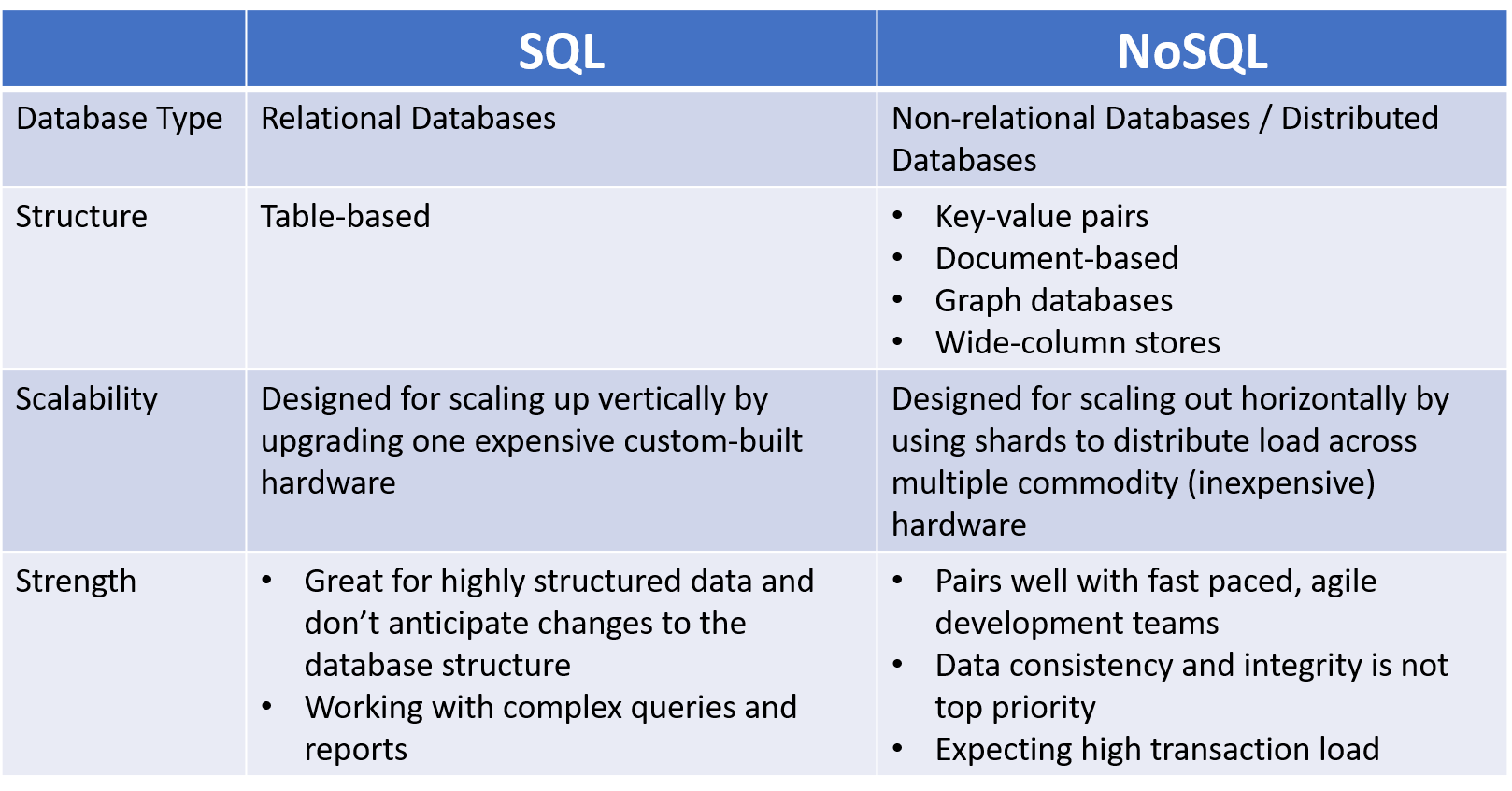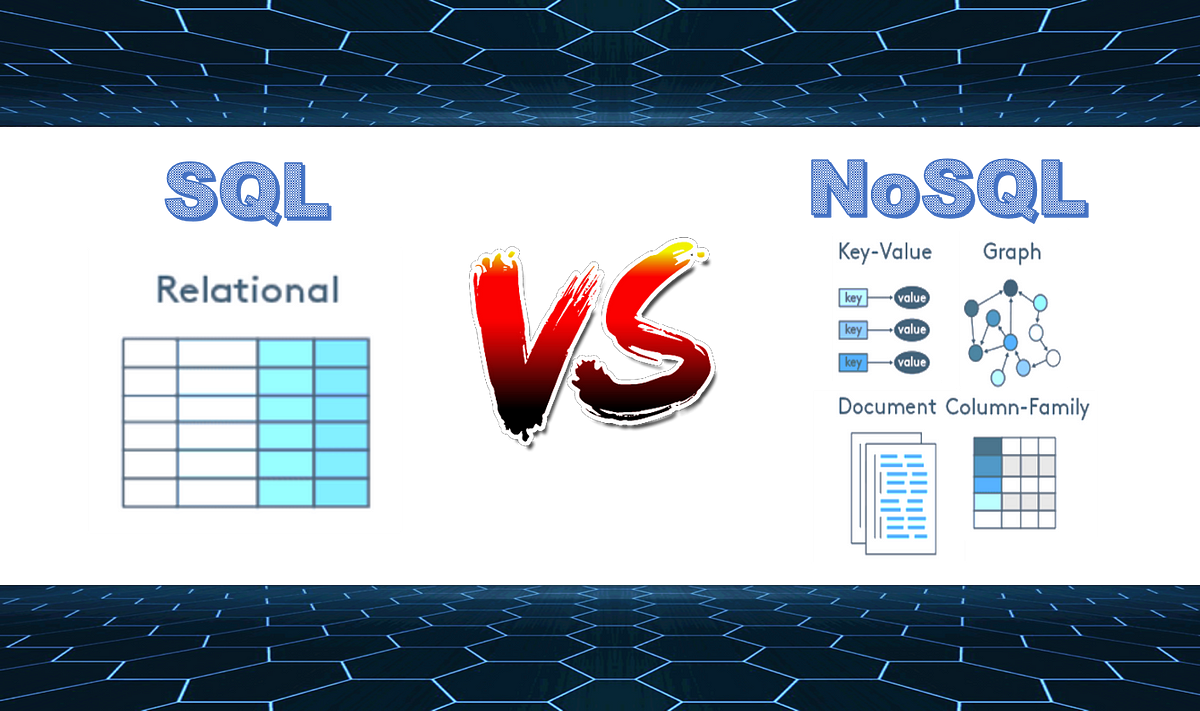The comparison between SQL and NoSQL databases is really the comparison between relational and non-relational data structures. While most enterprises have found tremendous success using only SQL databases, many have also begun to integrate NoSQL databases. In this article, we’ll highlight the key distinctions between the two and why NoSQL is becoming a preferred solution for certain applications:

Key characteristics of SQL vs. NoSQL
What is SQL?
First, let’s quickly review SQL databases. **S**tructured **Q**uery **L**anguage, is the standard language for relational databases. A relational database is characterized by its table-like structure with pre-determined columns and records organized as rows. Also known as a schema, the blueprint of a database describes the name, type, and constraints for each data field (column), as well as linkages across tables based on atomic data common to each. Relational databases draw strength from defined structures and the versatile query language to generate effective, reliable, and meaningful insight. Complex queries across tables can be produced using join and aggregation operations to perform computations and analytics. These powerful features make relational databases a great choice for Business Intelligence tools. However, there are also some drawbacks/challenges:
- Working with relational databases require significant up-front preparation and learning the schema.
- Each record must follow the same structure and changes to the existing structure is difficult since every record will need to be updated. This creates particular inefficiency for sparse data, where rows (records) have missing values across different columns (attributes).
- Scaling (vertically) relational databases is hard primarily because there is a trade-off between storage capacity and performance on a single server. Even on expensive “custom built” hardware, performance (processing power) begins to suffer when the database grows big, and upgrading can become costly. Today’s applications demand great performance as well as massive storage capacity.
- Relational databases struggle at keeping up with rapid adaptation to changing requirements.
#database #nosql #sql #mongodb
